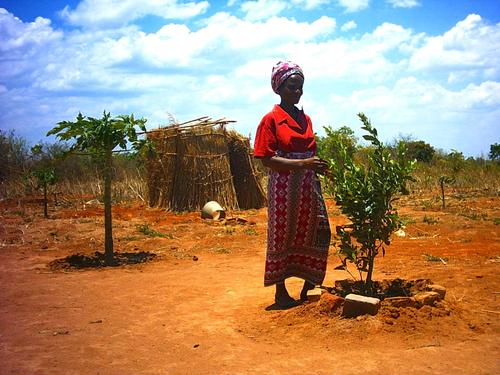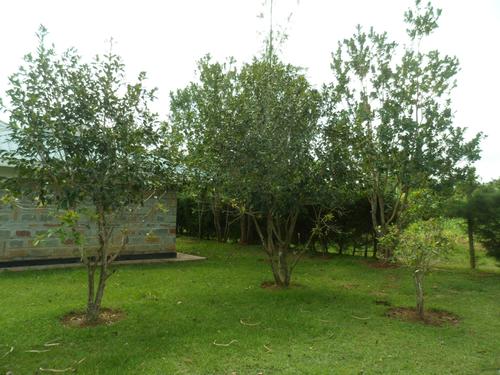Planting pits
Planting pits are mini-basins planted with a few seeds of annual or perennial crops. They come in different sizes, shapes and densities (pits/ha). Pits are usually 20 – 30 cm wide and 20 – 30 cm deep and spaced 60 cm – 1 m apart. The C:A ratio 3:1. They are dug by hand. The excavated earth is placed downslope of the pit and sometimes formed into a small ridge to capture rainfall and runoff the best way possible. Manure and/or fertilizer are added to each pit if available. Pits are often found in combination with stone lines to rehabilitate degraded and crusted lands, and to bring them back into cultivation. Grass growing between the stones helps increase infiltration further and accelerates the accumulation of fertile sediment. Planting pits are applied on flat to gently sloped terrain (0 – 5%) that receives rainfall of 350 – 600 mm/y. Common examples are: tassa in Niger, zaï pits in Burkina Faso, chololo pits in Tanzania, agun pits in Sudan, kofyar pits in Nigeria, katumani pits as well as tubukiza pits for fodder production in Kenya, yamka in Kyrgyzstan: yamkas are used to plant trees in pits on school yards, squares and other flat ground where irrigation is impossible or impractical. These pits can also be used for annual crops.
Ngoro (matengo) pits in Tanzania have a slightly different design: they are square shaped, wider and deeper, and each pit is surrounded by four bunds of soil, which are built on a layer of grass. Crops (often maize) are planted on those bunds in order to profit from nutrients provided by the decomposing grass.
(Mekdaschi & Liniger 2013)

